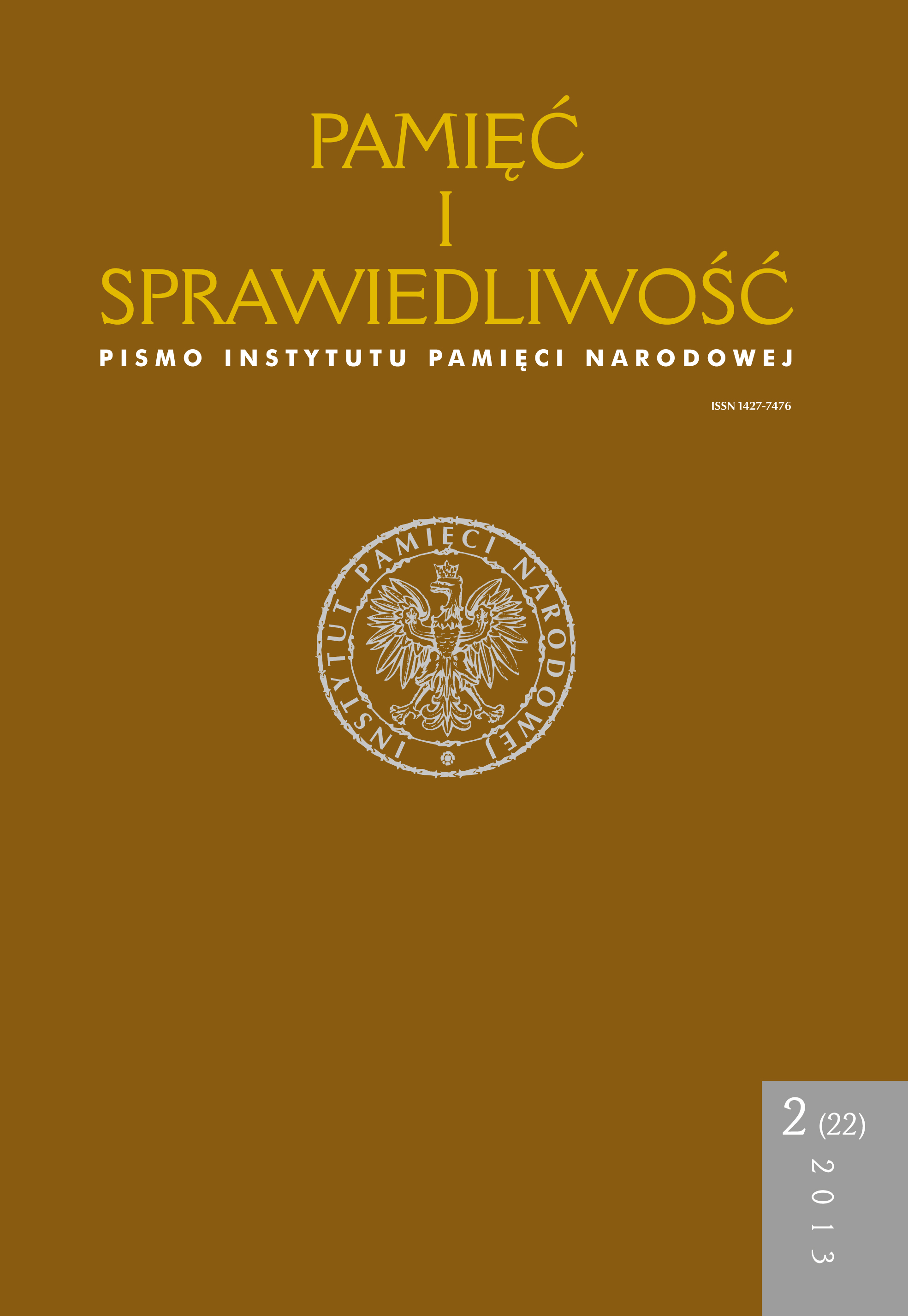Lieux de mémoire, icons, photographs. The impact of photographic images on collective memory in Poland – reconnaissance
Remembrance and Justice, Vol. 22 No. 2 (2013), pages: 93-109
Publication date: 2013-12-30
Abstract
The role of photography in the formative process of the Polish collective
memory remains relatively unknown. There are no detailed studies of the issue and
the available data do not create a logically constructed set. Hence, one has to rely
only on fragmented information.
In analysing the role of photography in the collective memory, a particular
attention has to be paid to the distinction used by Barbara Szacka between public
and common memory. The first one includes references to history present in
public messages, and the second one signifies what is really present in people’s minds.
In both these spheres, a different kind of photography dominates; the photographs
play different roles and are differently perceived. It can be analysed on the
example of two, rather opposite, cases: private photographs and photographic icons.
Private photographs are the pictures taken to commemorate the events from
the lives of individuals and their relatives, documenting events, people, places
etc. important for them. For the persons who collect them and for their relatives,
they are souvenirs of the past while what is important is their material virtue.
These are not only pictures but also objects possessing their own history. Private
photographs link family memories with those of a nation. On the one hand, they
introduce “a great history” into the family remembrance while on the other hand;
they become a component of the collective memory of wider groups of society.
The results of the surveys conducted between September and November of
2003 by Tomasz Ferenc and of interviews conducted by Joanna Bartuszek in the
period of 1999–2002 in Little Poland and the Podkarpacie Regions show that
private photographs constitute an important component of the family’s remembering.
Similar conclusions may be drawn from analysis of the data collected during
the studies of collective memory conducted in 2003 and 2009.
The concept of a place of memory (lieux de mémoire), introduced into modern
humanistic science by Pierre Nora is understood in many diversified ways. It can
also be applied to photography. The significant examples are the so called
photographic icons. These are those icons and not the depicted events which are
reference points that the social attention focuses on. They have been selected because
of their special features and the role they play in public debate. Even if they were
created with an intention of being an objective registration, providing them with
a status of icon was an act of giving them their meanings. In the Polish culture,
there are only a few pictures with an iconic status. The condition to obtain such
a status is a multiple exposition in mass-media and mass-media were regarded
untrustworthy within the whole course of the Polish People’s Republic’s history.
Different kinds of photography appear in the Polish collective memory and in
various spheres of that memory; different is the way of their reading and – what
is particularly important – different is a level of their reliability. The photographs
lack legitimacy which is acquired by being incorporated into a scientific debate.
One can observe rather an opposite process – compromising their documentary
value in the public debate.
Research on the impact of photography upon the collective memory requires
a detailed specification of the subject and the methodology of the analysis.
A different approach has to be used to photographs functioning in the common memory
and a different one to the photographic icons existing in the public memory.
Questions relating to photography have to become a constant element of the research
questionnaires used while studying the collective memory of the Poles.
.
Most read articles by the same author(s)
- Tomasz Stempowski, [Recenzje] Nadine Fresco, Śmierć Żydów. Fotografie, Czarne, Wołowiec 2011, ss. 135 , Remembrance and Justice: Vol. 22 No. 2 (2013)
 Język Polski
Język Polski
 English
English
 Deutsch
Deutsch
 Français (France)
Français (France)
 Italiano
Italiano
 Русский
Русский


 PDF (Język Polski)
PDF (Język Polski)
